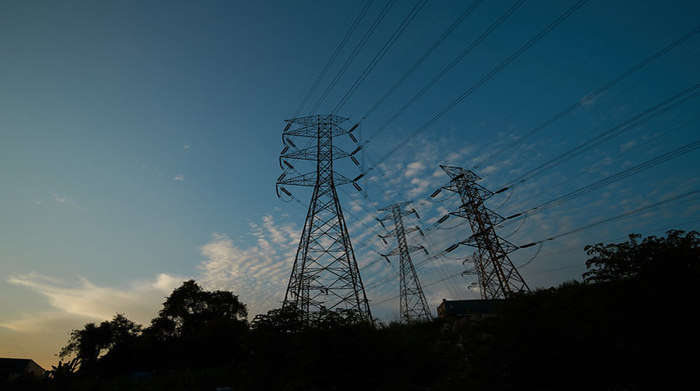How Strategic Co-Locating Can Accelerate Transmission Buildouts

Image courtesy of Rico Lee under Attribution-NonCommercial-NoDerivs 2.0 Generic License, resized to 700 x 391 pixels.
The strategic co-locating of transmission infrastructure is one way to potentially accelerate the transmission buildout that is so desperately needed in the U.S. to ensure ongoing reliability. Strategically co-locating transmission routes essentially means cohabitating transmission assets with other forms of linear infrastructure like broadband or railways. Let’s take a look at how this might work.
The Nuts and Bolts of Strategic Co-Locating
In a nutshell, this strategy would require developers to identify routes, primarily in rural areas, based on landowners’ willingness to host transmission in exchange for access to valuable co-located infrastructure. And one of the most valuable types of infrastructure in highly rural areas is broadband connectivity.
Rural broadband would be the perfect fit for this strategy because the broadband deficit in these areas is well known – in fact, the Infrastructure Investment and Jobs Act of 2021 allocated $42B for broadband expansion.
There are 2 main reasons for the broadband deficit in rural America. One is that the number of people per square mile is relatively sparse in rural areas, which would increase the per-person cost of broadband connectivity. Second, average household income tends to be lower in rural areas.
Therefore, strategic co-locating in these areas looks like low hanging fruit. The strategy would entail accelerating the buildout by allowing the demand for rural broadband to determine the specific high-capacity transmission routes that get developed.
This strategy seems like it would be an easy sell. Many rural electric utilities already co-locate power lines and broadband, and adding to these preestablished routes is relatively inexpensive because the costs for easements, permitting, etc., have already been incurred. Overall, the long-term impact of the strategy is that costs would decrease (development costs as well as electricity costs), grid reliability would increase, and clean energy sources would have an easier time connecting to the grid.
Only time will tell if strategic co-locating becomes a fruitful strategy for transmission expansion, but on the surface, it seems to offer many benefits for utilities, broadband providers, landowners, and customers.



